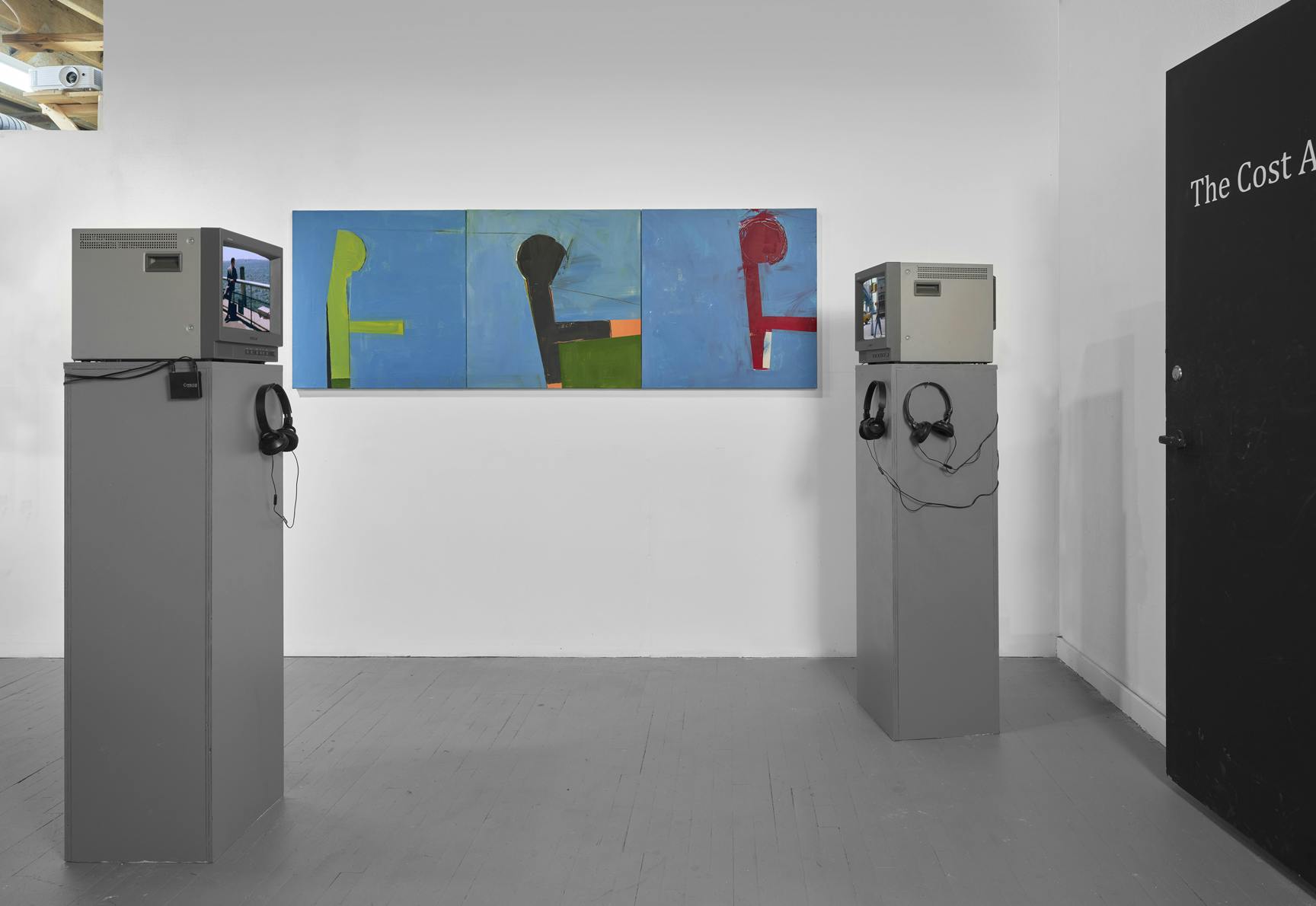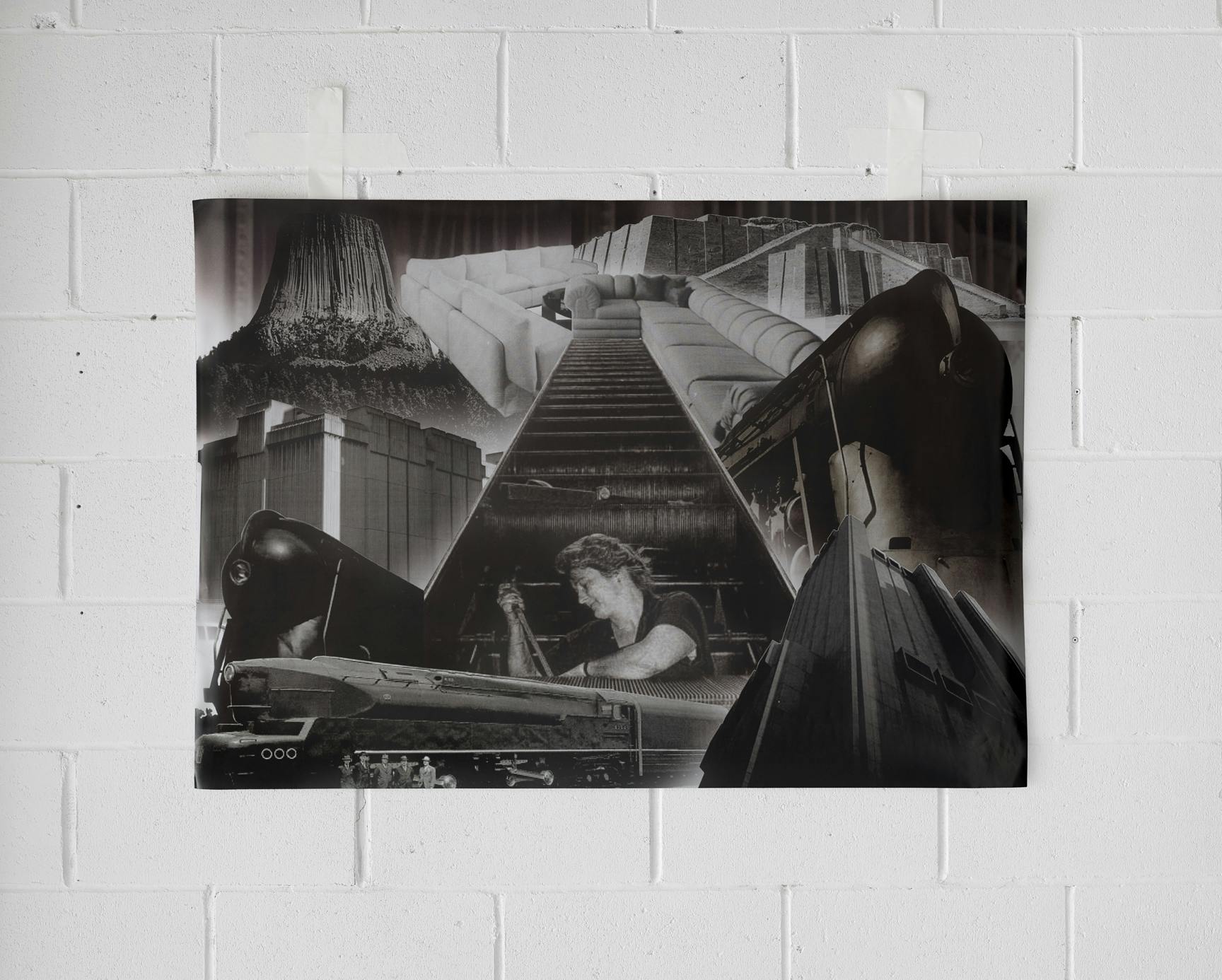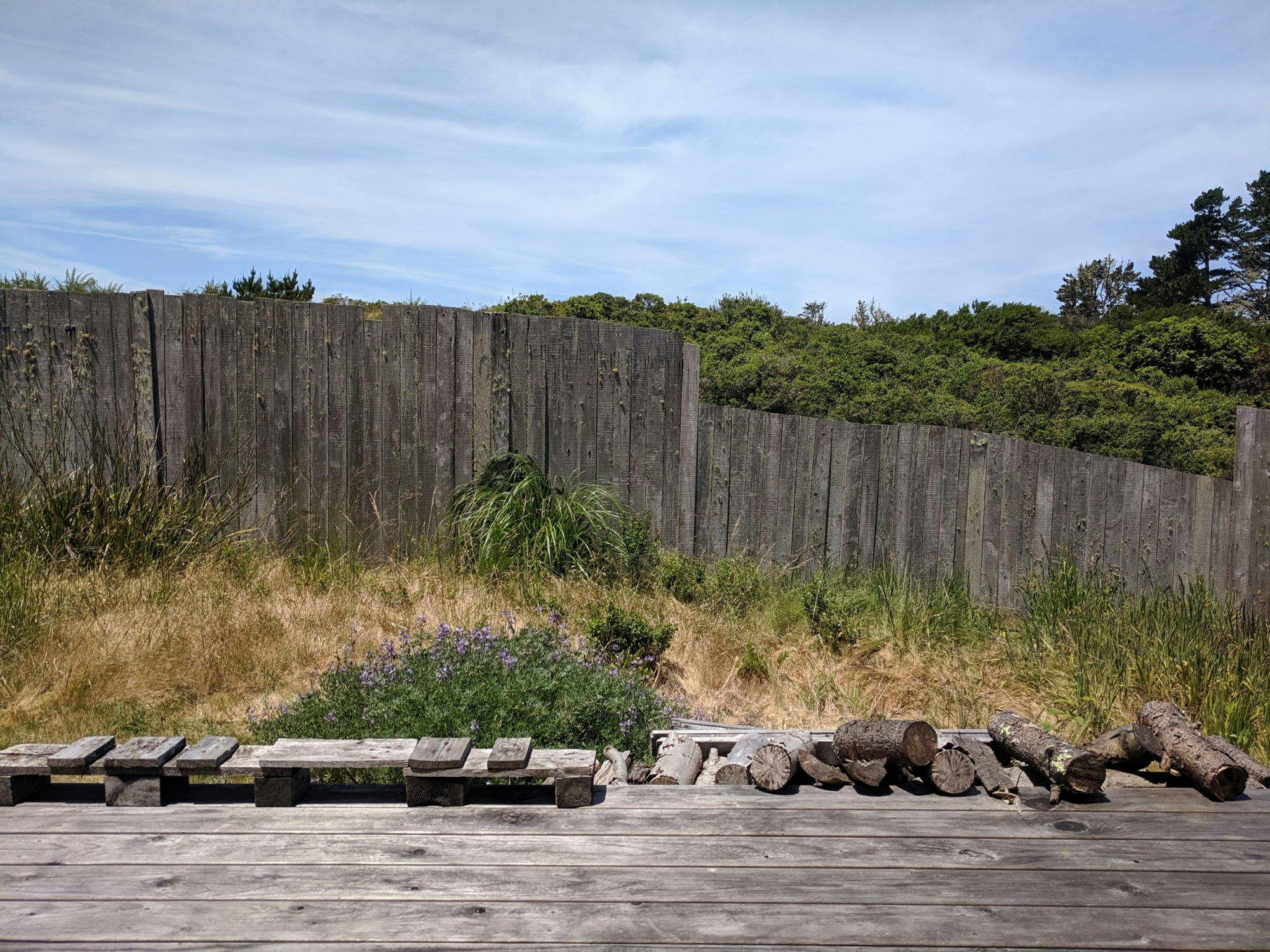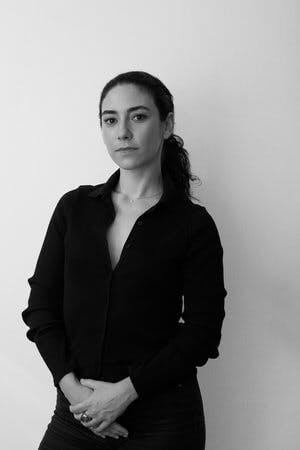One of the watershed innovations of postmodern dance was the liberation of movement from its symbolic and narrative functions in choreography and performance. Freed also from the attendant expectation of having to be ‘ideal,’ the dancing body began giving shape to the invisible forces of its own production. Through their movements, dancers began tracing the formal limitations of scores, and started borrowing basic actions—like walking—from everyday life. In the process, this new movement opened up the art of dance to every kind of body. Movement became an ‘index’(1); a measure of something instead of an attempt at the thing itself, a way of knowing outside the limits of representation and mimesis.
“New Movement,” a group show curated by Helen Singh-Miller at The Cost Annex in Boston on June 7th 2019, explored ways in which contemporary art is building on this legacy of movement. The show featured the works of ten artists either living in or connected to the Boston area, showing movement in its collective, individual, appropriated, accepted, and even marginalized variations. Brought together through Singh-Miller’s perceptive curation, these works shed light on the power of movement to make us imagine, see, and embody the world otherwise.
Housed in The Cost Annex—the studio of artist Robert Moeller—the exhibition was one of many group and solo shows that Moeller has hosted in his space. A painter and art critic, Moeller is known for supporting young artists in the Boston area, often giving them their first chance to participate in a show outside school. Moeller’s criticism—published in Hyperallergic and Art New England, among others—complements this cause, as he often gives emerging practitioners and their projects a well-deserved public platform by writing about them alongside established local and international artists.
Singh-Miller’s selection of artists drew from a number of Boston-based collectives, including the New Movement collaborative (founders of Lion’s Jaw performance and dance festival(2), scheduled for October 9 -14th this year), from which the exhibition borrows its name. A number of the artists in the “New Movement” exhibition—such as Carmine Grimaldi, Deniz Tortum, and Joseph Pomp—were part of Harvard’s Film Study Center (FSC), where Singh-Miller herself was a a fellow in 2016-17. Helmed by filmmaker and anthropologist Lucien Castaing-Taylor, who also directs the Sensory Ethnography Lab (SEL), the FSC has become an internationally recognized hub of avant-garde documentary work, forming a community of moving image artists committed to a more embodied approach to non-fiction filmmaking.

Will Johnson, Dance and Disorder, 2019, Single-channel video, two headphones, running time 6 minutes; Wendy Jacob, Three Minutes (red), 1993, Wool blankets, neoprene, blowers and timers, dimensions variable; Helen Singh-Miller, Grand Union, 2018, Single-channel video, running time 35 minutes. Photo by Stewart Clements.
“New Movement” also featured a number of established artists with long-standing ties to New England, including Wendy Jacob, an artist who has been in residency at universities and museums in the Boston area and who works at the intersection of the body, sculpture, architecture and design; Helen Mirra, a conceptual artist now based in the San Francisco Bay Area who taught at Harvard for a decade and hosted the Physical Intelligence Lab, teaching courses such as Walking Workshop and Sculpture Backwards; and Julie Carr, a Colorado-based poet, former dancer, scholar, and interdisciplinary artist who grew up in Cambridge and returns to do readings, most recently in 2017 at the alternative Cambridge art space Outpost 186, and as part of “Dance-Text” for BYO: Voices of the Contemporary at the Carpenter Center, which Singh-Miller co-curated in 2014.
Carr’s audio piece “There Be Dragons” (2019) was one of two sound pieces featured in the “New Movement” exhibition. Both highlighted the power of disassociating movement from vision and bodily presence, and set the tone for Singh-Miller’s multimedia elaboration of the show’s theme. Originally created as a soundtrack to a dance work by K.J. Holmes, “There Be Dragons” begins with the recognizable—and normative—rhythm of counting, forcing us to bear witness to an invisible, and unknowable, action. Is the child learning her numbers? Are the adults counting objects, or steps? Are the voices keeping a rhythm, performing the function of a metronome, or rehearsing minimalist choreography? Carr’s wry humor is apparent from the start: when asked about the opening section of “There Be Dragons,” the poet said that for her, counting has always been associated with death. The piece moves on to supplant the regularity it sets up by drawing us into aural situations that disrupt our expectations for patterns: we go in and out of public spaces, witness conversations, hear laughter and language uncannily repeated, a melody hummed. By the end of “There Be Dragons,” rhythm returns, with the sound of a stationary bike, windshield wipers, and/or a car turn signal keeping time to the sound of rain. Like a driver caught in a moment of unwanted stillness at a traffic light, we are primed to anticipate movement, and this anticipation is filled with possibility.
The second sound piece in the exhibition, titled “Music For Eyes” (2017), was created by Nathan Liow, an award winning pianist from Melbourne, Australia. In this 20-minute noise piece and improvised piano work, Liow used audio derived from social practice artist Carmen Papalia’s sonic mobility-cane to re-imagine the movements of a visually impaired person as a set of sounds and melodies. Papalia’s specially-designed cane has a sensor at its tip that picks up textural and sonic information within the environment of its user, digitally manipulates and then amplifies it into the space around the user so that they can hear and respond to it. The cane’s sonic outputs map movement non-visually, highlighting the augmented sense of hearing that non-visual learners rely on to navigate space. Much like sampling tracks in the recording studio, Liow overlays Papalia’s movements in public space with melodic compositions on the piano. The result is a blending of functional and aesthetic approaches to sound, offering an immersive experience for the listener, who can hear—simultaneously—how space is sculpted by the movements of a non-visual learner and how a musician interprets that sculpting of space.
“Music For Eyes” explores similar territory to Papalia’s “Blind Field Shuttle” (2017), an eyes-closed tour of Cambridge Common Park organized by Cambridge Arts. Papalia has collaborated with Boston affiliated artists, most notably Sara Hendren, a graduate of Harvard’s Art in the Public Domain program, who designed the new International Symbol of Access (ISA) or ‘Handicapped Symbol’ in 2013. You might have noticed the new symbol, which pictures a person actively engaged, leaning forward at an angle rather than sitting passively upright in a wheelchair. In 2015, Hendren and her students at Olin College of Engineering in Needham, MA, participated in the initial development of Papalia’s sonic mobility-cane.
The juxtaposition of movement that is considered merely ‘functional’—walking, breathing, talking—with movement that counts as ‘aesthetic’—dancing, in particular—was a thread that ran throughout Singh-Miller’s exhibition. “New Movement” was especially successful in using this juxtaposition to call out the hollowness of terms typically employed to denote the opposite of movement, such as ‘immobility’ and ‘disability’.
Will Johnson’s video “Dance and Disorder” (2019) presented two very different registers of movement side by side: videos of the Harlem Shake dance and footage from a scientific study documenting movement disorders, both found on the popular site YouTube. The societal distinction that classifies the former as ‘desirable’—the Harlem Shake was a viral sensation—and the latter as ‘undesirable’ movement is slowly chipped away by Johnson’s reference to a little-known historical event: the Strasbourg dancing plague of 1518. In July of that year, residents of Strasbourg were overcome by a sudden and uncontrollable urge to dance. One popular revisionist theory is that some of the afflicted were having stress-induced epileptic fits and that others were dancing from a place of compassion. This interpretation of the dance plague shows movement as a vehicle of solidarity, but it also demonstrates the creative potential of lifting movement out of its original context. Like the dance plague event, Johnson’s video takes the movements of dance and disorder outside of the normative sociological framework through which they are typically understood. The result managed to draw less attention to the undeniable contrast between black/white, abled/disabled, and appropriated/marginalized bodies on display in the video, and focus more on the formal similarities between the bodies’ movements. Working on an axis of estrangement/familiarity, the artist made the slippage between disorder and dancing the subject of his work and asks the audience: what is it to know another body, to embody their reality? Where should we draw the line in pursuit of that knowledge? Johnson is a vocal artist, sound programmer, and composer from New York City and the recipient of the 2019 McKnight Foundation’s Fellowship for musicians. “Dance and Disorder” is his first video work.

Joseph Pomp, Manhattan Video, 2019-ongoing, Film installation on CTR monitors on 5 ft. grey pedestals; Robert Moeller, andaonetwothree, 2019, Mixed Media on canvas panels, Triptych, 20 x 60 inches. Photo by Stewart Clements.
The engagement with the movements of so-called disability was also evident in Robert Moeller’s “andaonetwothree” (2019), a series of paintings in which the artist confronts the societal and legal norms of accessibility represented by the International Symbol of Access (ISA). A graphic that simultaneously protects and excludes the disabled, the ISA in Moeller’s paintings gains a movement of its own both through the traces of the artist’s gestures evident on the surface of the painting, and through the triptych’s resemblance to a film or animation strip. Where Sara Hendren undermines the assumption of immobility associated with the wheelchair sign within the confines of design, Moeller’s triptych takes a brush and palette knife to the unique vocabulary of movement produced by navigating the world in a wheelchair: defined edges and deep scratches parallel the jagged movements of a wheelchair as it hits the curb. Vibrant primary colors and precision persist despite the friction of the metaphorical paint application.
Despite society’s investment in the normative value of stasis—from ordering children to ‘sit still,’ to designating uncontrollable movement as a ‘disorder,’ and tying the privilege of citizenship to those who are able to ‘stay in one place’—movement permeates everything that we do, both as individuals and as a species. In fact, as Singh-Miller noted in the “New Movement” exhibition announcement, it is nearly impossible to locate “the stillness of a completed action,” whether that happens on a micro-level (such as the simple act of breathing) or on a macro-level (such as the phenomenon of mass migration). And yet, just because it is difficult to slow down and rest, does not mean the effort is wasted.
Lining the floor beneath the projections of two of the film works in the exhibition, Wendy Jacob’s animated sculpture “Three Minutes (red)” (1993) infused the show with one such ubiquitous micro-movement: breathing. In this piece, three forms—covered in blankets—rise and fall to the rhythm of breath. The breathing patterns used are based on three one minute segments taken from a chart of the artist’s own breathing recorded during three hours of monitored sleep. While breathing is usually considered something that distinguishes human beings from machines, it is the very mechanistic precision of the breathing pattern—enabled by an extremely accurate analog technology made in Switzerland—that makes Jacob’s sculpture so uncannily anthropomorphic.
Since the early 1990s, Jacob has been making work in the Boston area that explores relationships between physical experience and architecture. Her work has involved a range of media and disciplines including pneumatics (walls and ceilings that themselves breathe); furniture design (a series of Squeeze Chairs inspired by Temple Grandin); site-based installations (including tightropes rigged through living rooms); and sound (such as Waves and Signs, a platform for experiments and performances in low-frequency vibration). Jacob was awarded the Maud Morgan Prize by the Museum of Fine Arts, Boston in 2011 and this fall she will be presenting similarly embodied work as part of the show “Altered States and Human Threads” at Tramway in Glasgow, Scotland.

Tramaine de Senna, Imagination Creation, 2019, Offset print collage of scanned and printed images, 47 x 33 inches. Photo by Stewart Clements.
In Tramaine de Senna’s “Imagination Creation” (2019), a collage work featured in “New Movement,”movement is the undeniable—if spectral—historical and compositional force that holds the piece together. The combination of images alluding to movement that make up the print—the escalator, the train, the skyscraper—gave the work a formal dynamism that complement the historical circumstances of migration and mobility that undergird de Senna’s practice. In this piece, de Senna wove together a personal family history of migration and underground labor—her great-grandfather migrated to New York to work on the subway, while her father, an immigrant from China, works subterraneously in the Bay Area’s BART system—with the feminist history of the first female mechanic of Vespa, Debby Tudor. The escalator is a poignant center-piece of de Senna’s critique: it connects the towering skyscrapers—symbols of the economic success and cultural domination of the US—to the unseen toil and internalized violence underground that makes them. De Senna, who works between California and Antwerp, Belgium, is slated to have a solo show at the non-profit exhibition space Mélange in Cologne, Germany, this fall, curated by Patrick Haas.
Unlike language, which as a system of communication is heavily dependent on a pre-existing, shared code between interlocutors, movement lends itself to a much more flexible mode of meaning-making. In its ambiguity and universally shared elements—as gestures and steps make themselves readily available to improvisation, reinterpretation, and refinement—movement becomes accessible to the novice and the expert alike. The two film works in the “New Movement” exhibition—Helen Singh-Miller’s “Grand Union” (2018) and Deniz Tortum and Carmine Grimaldi’s “If Only There Were Peace” (2017)—show how movement speaks even when everyone is silent or speaking different languages, and how the process of learning movement unlocks affective and sensory connections that language alone may not.
In “Grand Union,” Singh-Miller invites her family back to the home where she and her siblings grew up for a special kind of (re)union. Singh-Miller spends a weekend teaching her parents, brothers, and sister excerpts from famous choreographies first developed in the context of postmodern dance groups such as Grand Union, which grew out of dancer Yvonne Rainer’s “Continuous Project Altered Daily” (1970). At times disgruntled and frustrated, Singh-Miller’s family members learn to find moments of enjoyment and discovery as they re-animate the ‘everyday’ movements of postmodern dance (namely works from Judson Dance Theater and Grand Union) into the ‘everyday’ space of the house. Movement is shown to be a powerful equalizer in the context of (patriarchal) family hierarchy. By the end of the film, a reciprocal process of learning—a back-and-forth give-and-take—emerges where everyone in the family is equally valuable as a source of embodied knowledge and perspective. Singh-Miller has led similar interventions at Industry Lab and Studio 550 in Cambridge, MA, and will be directing the “Action of the Angel,” a site-specific performance inspired by Walter Benjamin’s angel of history, at Mass MoCA on October 5th 2019 in collaboration with D. Graham Burnett and Joanna Fiduccia. Excerpts from Singh-Miller’s photographic project “Maid’s Rooms” are also forthcoming in “Midway Journal” and “Radical Hospitality,” curated by Diana Lempel of Practice Space, located in Cambridge’s Inman Square.
Embodied knowledge is at the heart of the formal proposition of “If Only There Were Peace.” Grimaldi and Tortum first met when they were taking classes developed by the Sensory Ethnography Lab at Harvard. Their 2017 documentary follows a film production company—comprised of Turks, Kurds, Iraqi refugees, and former soldiers of the Free Syrian Army—while shooting a melodrama about the Kurdish-Turkish conflict in the Turkish countryside. A film about a film, the documentary is not interested in conveying the narrative of the melodrama itself. It focuses instead on the unscripted movements that emerge on the margins of a film set—the gestures, facial expressions, and body language of the communal and repetitive activity of filmmaking—as an ad hoc choreography worthy of being documented. By making the ‘meta’ quality of their documentary the film’s main subject matter, Grimaldi and Tortum expose the bleeding lines between rehearsal, re-enactment, and reality, helping us glean information about human relationships and forcing us to look for different forms and functions of artfulness, even in the context of war. Grimaldi is currently a postdoctoral fellow at U. W. Madison working on a book manuscript on the history of early videotape, while Tortum is currently a resident at SF Filmhouse.
The movements of popular culture were the subject of artist Joseph Pomp’s “Manhattan Video,” an ongoing project that maps the representation of Manhattan across film history. Another graduate of Sensory Ethnography, Pomp is a film/video scholar, curator, and critic who most recently programmed Global Punk, a film series at the Museum of Arts and Design in New York. The excerpt of Manhattan Video that featured in the “New Movement” exhibition lined up scenes from movies shot in New York locations with a map of Manhattan, fusing cartographic and cinematic representations of the Big Apple. Using a logic of place borrowed from formalist films such as Thom Andersen’s “Los Angeles Plays Itself” (2003), Pomp invites the viewer to “street walk onto a TV map.” In the video “Sutton Place,” which pays homage to the midtown-east Manhattan neighborhood bearing the same name, Pomp reveals the double effect of cinema’s uncanny representation of reality. Each time it is featured in a movie scene, Sutton Place is both transformed and frozen in time. Despite owing its early novelty to movement, then, the cinema is always playing catch up with the sprawling, ever-changing landscape of the city. Through keen selection and juxtaposition, Pomp estranges the familiar environment of New York as well as what we expect from a movie plot.

West Deck at Muir Beach Overlook, 2019. Photo by Helen Mirra.
In another example of movement as a tool for estrangement and discovery, Helen Mirra’s “Round Way” modulated the simple act of turning into a score for a long-distance performance. For the duration of the “New Movement” exhibition, Mirra—“barefoot on west deck at muir beach overlook”—carried out two separate actions on the west deck at the Muir Beach overlook north of San Francisco: a 360° turn to the left, and a 360° turn to the right, each lasting forty five minutes. “Round Way” invited renewed attention to the simplest tasks of movement by drawing out a single turn for an extended period of time, and by using scientific language to describe it. The terms ‘dextrorotatary’ and ‘levorotatary,’ used to characterize compounds with the property of rotating the plane of a polarized light ray to the right or left, respectively, highlight the human body as a medium for physical transformation. This cemented the relationship between culture, body, and nature that is a major theme in Mirra’s practice. It also raised a question provoked by the show as a whole: how does movement illuminate our understandings of the limit between the artful and the natural? Mirra’s recent weavings were on display this summer as part of “No Horizon: Helen Mirra and Sean Thackrey” at the Berkeley Art Museum.
Through Singh-Miller’s syncretic curatorial approach, the “New Movement” exhibition performed the power of movement to “harness invisible forces (political, physical, affective) and make them visible through kinetic assemblages of bodies and matter.”(3) Part of a wider investigation into the relevance of physical experience and the different realities—virtual, lived, or otherwise—it can alert us to, “New Movement” championed movement as an indispensable tool for artistic and social practices in our contemporary moment. It also demonstrated the impressive range of art invested in the relevance of the body and its movements coming out of the Boston area today.
1. Rosalind E. Krauss, “Notes on the Index: Part 2,” in The Originality of the Avant-Garde and Other Modernist Myth, (Cambridge, MA: MIT Press, 1986), 211.
2. Lion’s Jaw assembles a group of local and national choreographers, performers, educators and students to study, perform and create together for duration in an intensive environment.
3. Andre Lepecki , “Zones of Resonance: Mutual Formations in Dance and the Visual Arts Since 1960,” in Move: Choreographing You: Art and Dance Since the 1960s, Stephanie Rosenthal, ed. (London: Hayward Publishing, 2010), 157.
Argyro Nicolaou is a writer and filmmaker based in New York City. She holds a Ph.D. in Comparative Literature and Critical Media Practice from Harvard University and in 2018-2019 was part of the Media and Performance curatorial department at MoMA. She is currently a postdoctoral fellow at Princeton.





